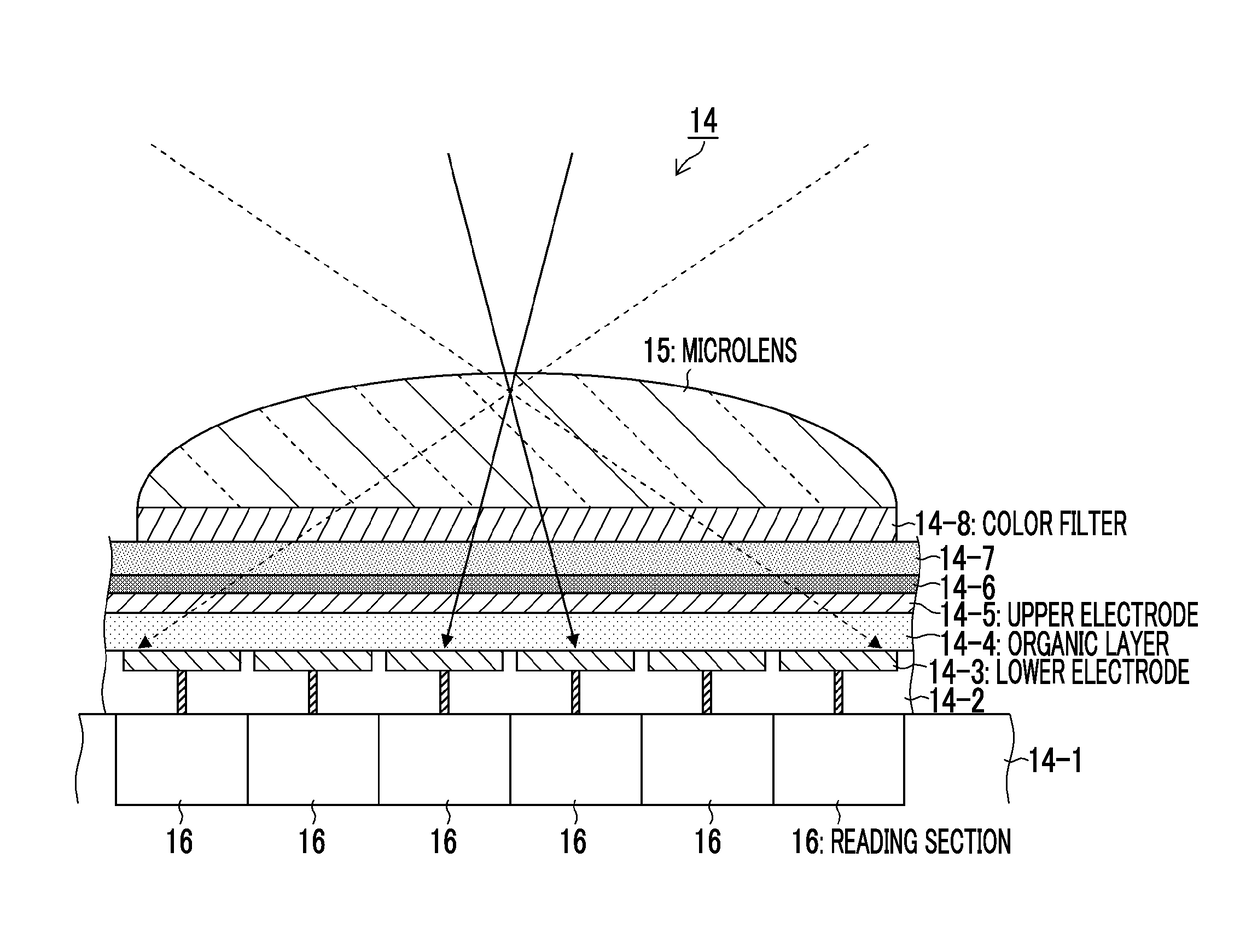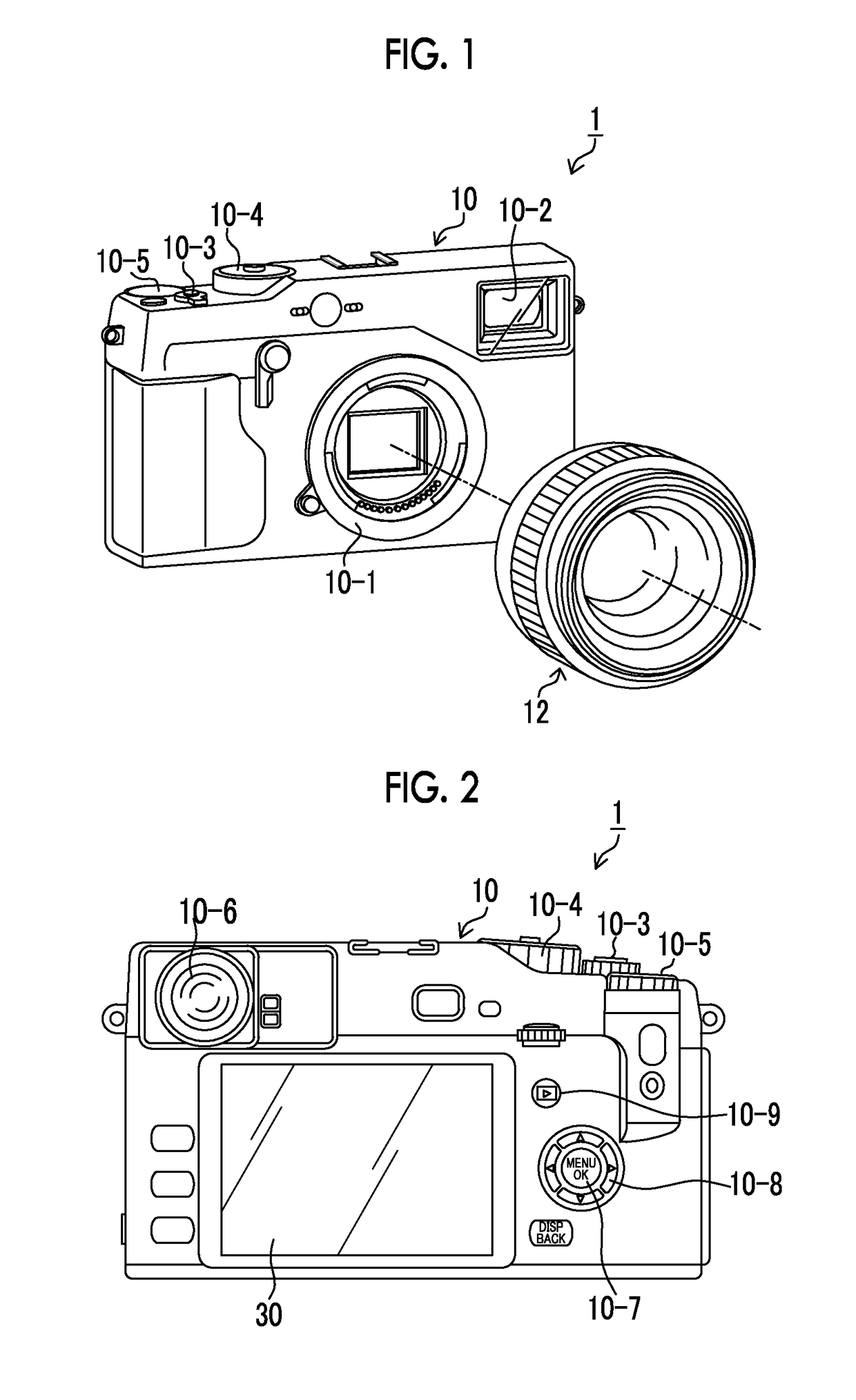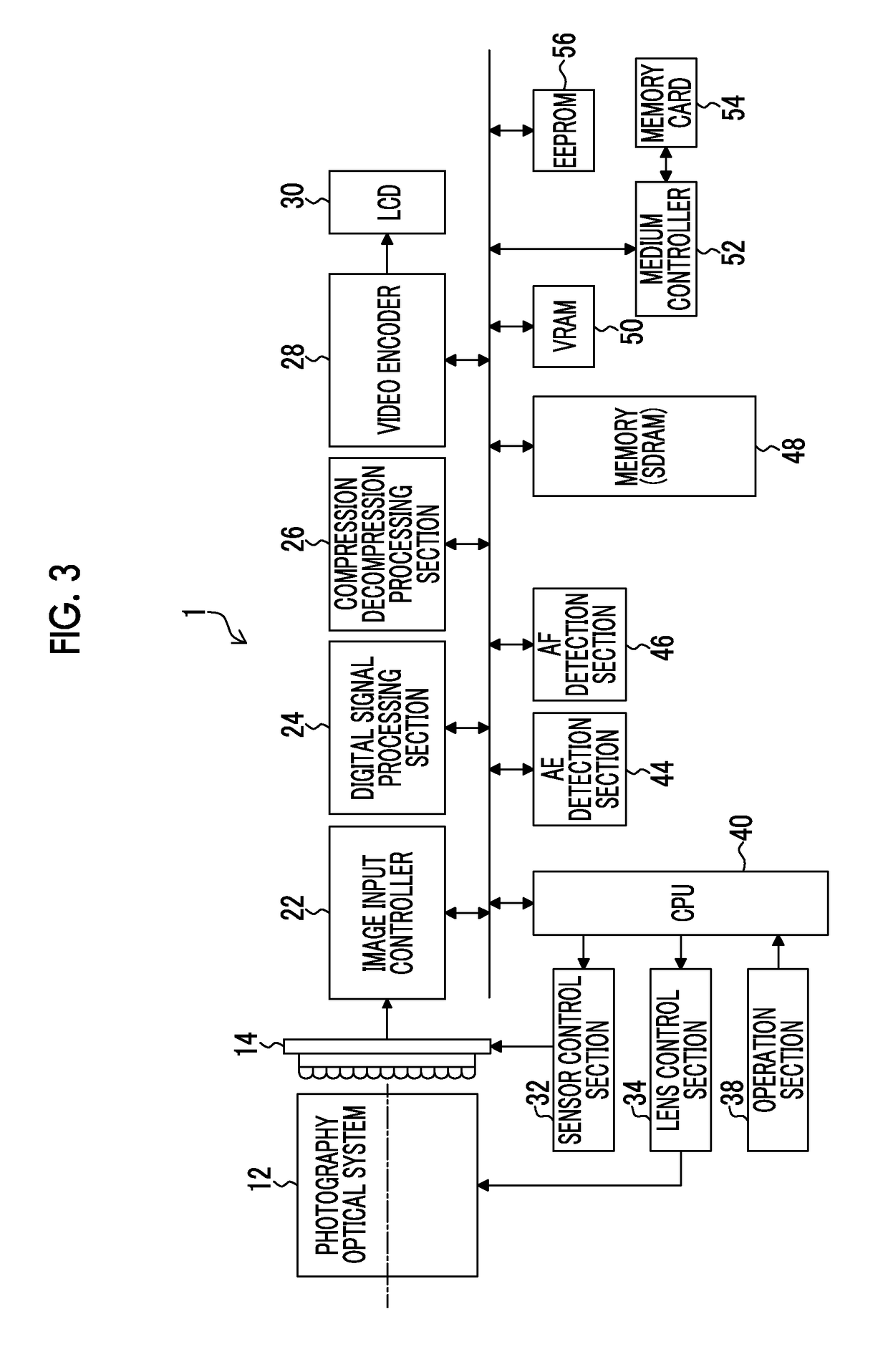Imaging device and imaging method
a technology of imaging device and aperture value, which is applied in the direction of exposure control, instruments, television systems, etc., can solve the problems of difficulty in conventional cameras to obtain images based on a plurality of aperture values, and achieve the effect of reducing the thickness of the photoelectric conversion section
- Summary
- Abstract
- Description
- Claims
- Application Information
AI Technical Summary
Benefits of technology
Problems solved by technology
Method used
Image
Examples
modification example 1
[0126]According to the present example, there are provided the divided regions which have smaller division widths in the center portion of the pixel than those in the peripheral portion of the pixel. Thereby, in the present example, there may be provided the divided regions based on dependency of the aperture value of a ray angle.
[0127]FIGS. 10A and 10B are schematic diagrams illustrating division of the pixel in Modification Example 1, in the pixel shown in FIGS. 7A and 7B. As shown in FIG. 10A, the separated electrodes 14-3 are divided with a small width in the central portion, and are divided with a larger width at a position closer to the peripheral portion. Further, as shown in FIG. 10B, when the pixel is viewed from the just above, the radii of the separated electrodes 14-3 are divided such that a plurality of different concentric circles overlaps with each other.
[0128]As shown in FIG. 10B, the divided region 111 corresponding to the aperture value F8 is a circle having a smal...
modification example 2
[0130]In the present example, there are provided divided regions which have different division widths in accordance with the color of the color filter 14-8. Thereby, it is possible to receive light by the divided regions which are quite appropriate even for light with long wavelengths.
[0131]FIGS. 11A to 11C are schematic diagrams illustrating change in division widths of the divided regions corresponding to the small-aperture-side aperture value in accordance with the color of the color filter 14-8.
[0132]As shown in FIG. 11A, in a pixel having a red color filter 120, a divided region 126 corresponding to the small-aperture-side aperture value is a circle having a radius R(R). Further, as shown in FIG. 11B, in a pixel having a green color filter 122, a divided region 128 corresponding to the small-aperture-side aperture value is a circle having a radius R(G). Furthermore, as shown in FIG. 11C, in a pixel having a blue color filter 124, a divided region 130 corresponding to the small-...
modification example 3
[0135]In the present example, in accordance with the position of the pixel in the image sensor 14, a method of dividing the separated electrodes 14-3 is changed. In the present example, so-called scaling in the image sensor 14 is performed. Thereby, light can be precisely received in the divided regions even in the central and peripheral portions of the image sensor 14.
[0136]FIG. 12 is a schematic diagram of a main lens 140 and the image sensor 14 provided in the photography optical system 12.
[0137]As shown in FIG. 12, the image sensor 14 is formed of a plurality of pixels. Further, for convenience of description, only necessary parts of the pixels of the image sensor 14 are shown, and the others are omitted.
[0138]Each of the pixels, which are disposed in the central portion of the image sensor 14, is divided in symmetric with respect to the center of the pixel. That is, in a sectional view of the separated electrodes 14-3 (refer to FIG. 4, FIG. 7A, FIG. 9A, or FIG. 10A), the separa...
PUM
 Login to View More
Login to View More Abstract
Description
Claims
Application Information
 Login to View More
Login to View More - R&D
- Intellectual Property
- Life Sciences
- Materials
- Tech Scout
- Unparalleled Data Quality
- Higher Quality Content
- 60% Fewer Hallucinations
Browse by: Latest US Patents, China's latest patents, Technical Efficacy Thesaurus, Application Domain, Technology Topic, Popular Technical Reports.
© 2025 PatSnap. All rights reserved.Legal|Privacy policy|Modern Slavery Act Transparency Statement|Sitemap|About US| Contact US: help@patsnap.com



